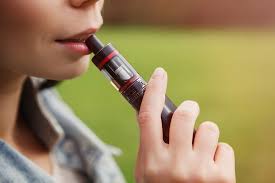As proponents of oral healthcare, we do our best to stay current on cultural trends that may or may not affect the health of our patients. Over the past decade or so, the use of smokeless and non-combustible tobacco has gotten more popular, especially among those who believe that this habit is less dangerous than smoking real tobacco. With this practice on the rise, even among teens and children, the healthcare community has found that it’s time to develop strategies to address this important issue. In October, a Summit will take place in California with a good part of the agenda specifically devoted to the effects of smokeless tobacco on oral health.
Looking ahead
At Mitchell Dentistry, we are concerned about the marketing and the use of “dissolvable tobacco” products – appealing to both smokers and children. Little is known about the long-term health implications of these products already introduced to the public. Furthermore – research, knowledge and public awareness of the health implications of smokeless and non-combustible tobacco use lags, while the known dangers of these products continue to increase.
We will pay close attention to the discussions at The Summit to see how the experts plan to face the unique challenges brought forth by smokeless and non-combustible tobacco use. It will serve as a motivating force for community action on this important, contemporary public health challenge.
Chewing, Vaping and Smoking…oh, no

In our own practice, we have seen patients who have been negatively affected by chewing tobacco – they tend to place it in the same area between cheek and gum, increasing their risk of oral cancer in that spot. In addition, the fiberglass in these products can abrade the gums, making it easier for toxic chemicals to be absorbed.
And what about e-cigarettes? We all know the negative effect of smoking cigarettes on oral health – and on all other aspects of your health. Now we have the rising popularity of vaping, (the action of inhaling the vapors produced by e-cigarettes). While there isn’t much research yet on vaping’s actual effect on oral health, the evidence that’s out there should make us skeptical.
- Vaping does still usually result in the inhalation of nicotine. Though there are nicotine free options, many e-cigarette cartridges contain nicotine, which when inhaled can have many harmful consequences. Nicotine is a vasoconstrictor, meaning it constricts blood vessels and reduces blood flow. This directly impacts the mouth’s ability to fight off bacteria, reduces cellular regeneration and healing ability, and can lead to periodontal disease.
- These vapors do have a negative impact on gum tissue. A study published in the journal Oncotarget found that e-cigarette vapors, when burned, cause the release of inflammatory proteins in the gum tissue. This puts stress on the cells, resulting in damage that could lead to oral diseases such as periodontitis.
- The flavoring in e-cigarettes may be quite harmful. The above study found that flavored vapor, some flavors especially, did even more damage on the cellular level than unflavored vapor. And while these flavoring chemicals boast an FDA rating of “generally recognized as safe,” it is important to note that this refers to ingestion, not inhalation.
- Vaping may be harmful to your respiratory system just like cigarettes. Researchers at the University of North Carolina have found that e-cigarettes produce similar, if not farther reaching, suppression of key immune genes in our nasal passages and respiratory system, as compared to conventional cigarettes.
While more research is definitely needed, our counsel to our patients is to abstain from all forms of tobacco use to maintain good oral health, and overall wellbeing.
As always, please ask us for further education on this topic, or bring us any of your concerns on your oral healthcare – our goal is to keep you healthy and safe!
All the best from our family to yours,
Dr. Jim